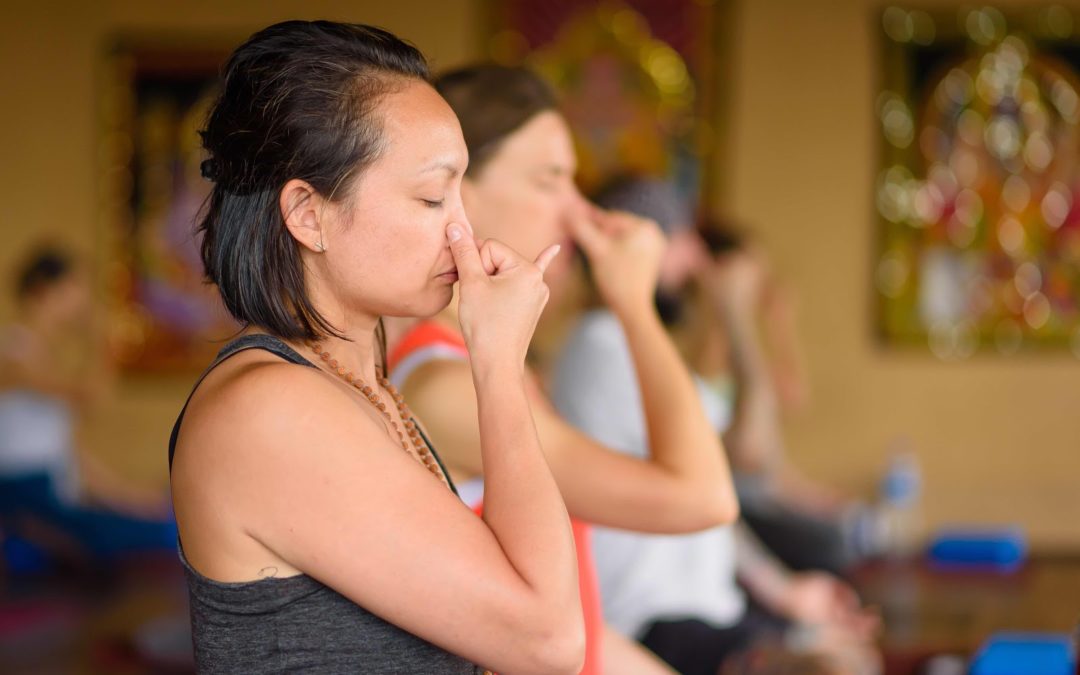Who knew that pranayama could be so beautiful? If you would see what I see, feel what I feel!
It has been a powerful first 5 days leading my 200/300 Hour TTC in Vinyasa & Yin Yoga in Ubud, Bali.
To bear witness to the breaking open of so many beautiful hearts, the melting of facades, the unraveling of the patterns of holding and resistances physically, mentally and emotionally, is beyond words. But if I had to choose just one, it would be “inspiring!” The true science of Hatha-Raja yoga provides tools that bring us bacwk “home.”’~ Yoga is a returning and a remembering of sorts, that we are not broken, and that there is nothing to fix. Pranayama brings us into the ultimate alignment of Mind, Body and Spirit. When we are in alignment, we remember that we are a child of God, made of Divine material, We discover why we are here, our life purpose or Dharma.
I teach the yoga teacher trainees several pranayama exercise on the very first day, and it becomes part of our daily practice routine. This way, hopefully when they leave the training and step out into the advanced practice of life, they will consistently continue to include pranayama, pas well as japa, meditation and of course asana into their daily lives.
So what is Pranayama and where did it originate?
Pranayama is the formal practice of controlling the breath, which is the source of our prana, or vital life force.
The etymology is prana, breath plus ayama, and defines it as the suspension of breath. The compound prāṇāyāma is “the three ‘breath-exercises’ performed during Saṃdhyā. ( pūrak, rechak, kumbhak) This technical definition refers to a particular system of breath control with three processes. Purak (to take the breath inside), kumbhak (to retain it), and rechak (to discharge it). There are other processes of prāṇāyāma besides this three-step model.
The definition of āyāmaḥ derives from ā + yām and provides several variant meanings when used in compounds. The first three meanings have to do with length, expansion, extension and stretching, extending, but in our specific case of use in the compound prāṇāyāma, āyāmaḥ means restrain, control, and st
MRamamurti Mishra gives the definition: Expansion of individual energy into cosmic energy is called prāṇāyāma.(prāṇa, energy + ayām, expansion).
Prāṇāyāma is mentioned in verse 4.29 of the Bhagavad Gītā. According to Bhagavad-Gītā , prāṇāyāma is translated “trance induced by stopping all breathing”, also being made from the two separate Sanskrit words, prāṇa and ayam.
Yoga Sutras of Patanjali
Pada (Chapter)
Sutras
Samadhi Pada: On being all absorbed in spirit
Sadhana Pada: On being immersed in spirit
Vibhuti Pada: On supernatural abilities and gifts
Kaivalya Pada: On absolute freedom
Pranayama is thee fourth “limb” of the eighdt limbs of Ashtanga Yoga mentioned in verse 2.29 in the Yoga Sutras of Patanjali. Patanjali, a Hindu Rishi, discusses his specific approach to pranayama in verses 2.49 through 2.51, and devotes verses 2.52 and 2.53 to explaining the benefits of the practice. Patanjali does not fully elucidate the nature of prana, and the theory and practice of pranayama seem to have undergone significant development after him. He presents pranayama as essentially an exercise that is preliminary to concentration.
Many yoga teachers advise that pranayama should be part o8f an overall practice that includes the other limbs of Patanjali’s teachings, especially Yama,Niyama, and Asana.
The Indian tradition of Hatha Yoga makes use of various pranayama techniques. The 15th century Hatha Yoga Pradipika is a key text of this tradition and includes various forms of pranayama such as breath retention techniques termed Kumbhaka and various body locks (Bandha) Other forms of pranayama breathing include Ujjayi breath (“Victorious Breath”), Bhastrika (“Bellows Breath”), Kapalabhati (“Skull-shining Breath”), Surya Bhedana (“Srun-piercing Breath”) and the soothing Bhramari (buzzing like a bee)
Several researchers have reported that pranayama techniques are beneficial in treating a range of stress-related disorders, as well assymptomatic relief of some breathing disorders such as asthma.
Authoritative texts on yoga state that, in order to avoid injuries and unwanted side effects, pranayama should only be undertaken when one has a firmly established yoga practice and then only under the guidance of an experienced Guru.

